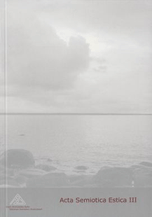Rahvuslik identiteet ja klassikamängud millenniumivahetuse Eesti teatris
National identity and playing with classics in Estonian theatre at the turn of the millennium
Author(s): Luule EpnerSubject(s): Semiotics / Semiology
Published by: Eesti Semiootika Selts
Keywords: identity; theatre; literary classics; play; identiteet; teater; kirjandusklassika; mäng
Summary/Abstract: National identity is to a great extent based on common myths (re)produced by works of art and literature; in the long run these works themselves can start to function as cultural myths. Performing national classical works, theatre relates them to the continuously changing social context and renews, refutes or reaffirms their meaning. Theatrical representations of the stories and characters that are significant for a nation are a part of the mechanisms of identity formation. In Estonia of the 1990s–2000s the national values and common myths that served to hold together the society in the Soviet period have lost their former power of social consolidation and are called into question. The present article examines contemporary Estonian theatrical productions which are based on rewriting of well-known national classics: the prose works by Oskar Luts, the tragedy “The Werewolf” by August Kitzberg, and the national epic “Kalevipoeg”. The article tries to find answers to questions how ingredients of national identity (for instance, the relation to the Other) are displayed and (de)constructed, and what textual and directing strategies are used by adapting of above-mentioned classics.
Journal: Acta Semiotica Estica
- Issue Year: 2006
- Issue No: 3
- Page Range: 011-025
- Page Count: 15
- Language: Estonian

